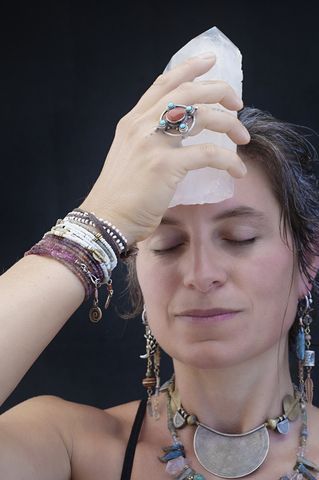Tapping into your truth
When the mind doesn't have all the answers, listen to the body

Sometimes when you’ve got an issue you’re facing in your life, you can turn it over and over again in your mind and just not get anywhere. You know how it goes – it’s like your thoughts go around and around in circles, but you can’t find any resolution.
When this happens, it might be time to give the mind a bit of a break and let the body speak. There’s lots of ways to do that – yoga practitioners and practitioners of other mindful movement modalities will no doubt have had the experience of going into a class or practice session with a problem, forgetting about it completely, and yet walking out with an insight, or even a solution.
One way of bringing the power of your mind as well as the insights of the body to an issue is Emotional Freedom Technique – more commonly known as “Tapping”.
Tapping has been called an “energy psychology” technique, as it was originally designed by Gary Craig in the 1990s. Gary Craig was not a psychologist, he was an engineer, but he came up with a technique that is now used by counsellors and psychologists around the world.
To be absolutely honest with you, it’s weird. The technique involves tapping on your face in certain points (which very roughly correspond with meridian acupoints), which discussing a certain issue. As well as talking, we also pay attention to the felt sense in the body, how it changes over time, and what it might be trying to tell us.
Since it was developed in the 1990s, there has been a lot of research done into its efficacy. This has included around 70 randomised controlled trials, published in peer-reviewed journals (which is the gold standard for medical research). It is a recognised modality by the Australian Counselling Association and the American Psychological Association. Although Craig felt that the way it worked was due to meridians and acupoints, the research suggests other possible mechanisms of action – tapping may “deactivate” certain neural mechanisms that trigger stress responses or behaviours, while “activating” parts of the brain associated with executive function[1].
I don’t pretend to be an expert on neuroscience and I am aware that tapping is not accepted by all psychologists or counsellors.
But there have been positive results for tapping in studies involving anxiety, depression, PTSD, phobias, food cravings and eating disorders. And it is a tool that anyone can learn to use for themselves to reduce stress or get to the root of an issue that’s bothering them.
As an holistic counsellor and yoga teacher, I am a big fan of tapping as a way to bring the body and the mind together in a powerful way. I have seen tapping help people connect with their own truth, identify and regulate emotions, and support themselves in their own wellbeing.
If you’ve got an issue that keeps coming up for you, but you can’t get your head around it; if you have a behaviour that stubbornly refuses to change; or if you’d like to learn how to listen to the messages of your body and heart – tapping might be able to help.
If you’re ready to tap into your truth, get in touch today for a chat to discover if tapping might be for you.
REFERENCE
1. Church D, Stapleton P, Yang A, Gallo F. Is Tapping on Acupuncture Points an Active Ingredient in Emotional Freedom Techniques? A Systematic Review and Meta-analysis of Comparative Studies. J Nerv Ment Dis 2018; 206: 783-793.









